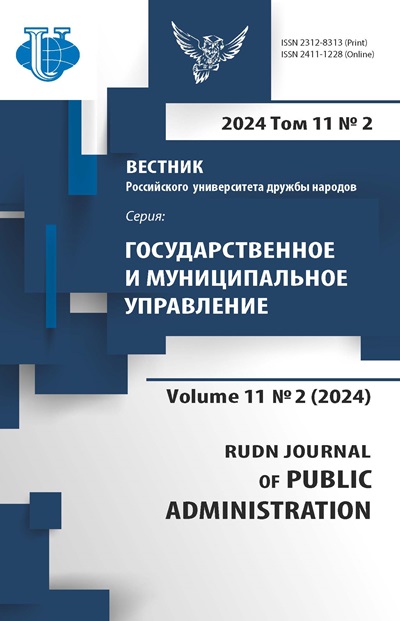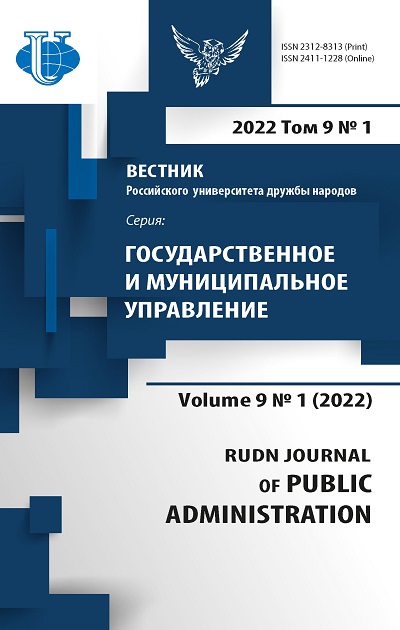Аналитическое исследование российского опыта экономического развития и интеграции в мировую экономику: уроки для Ирана и развивающихся стран
- Авторы: Резаинежад И.1
-
Учреждения:
- Российский университет дружбы народов
- Выпуск: Том 9, № 1 (2022)
- Страницы: 83-93
- Раздел: Государственное управление: теория и практика
- URL: https://journals.rudn.ru/public-administration/article/view/30595
- DOI: https://doi.org/10.22363/2312-8313-2022-9-1-83-93
Цитировать
Полный текст
Аннотация
Экономическое развитие и развитие общества в целом - одна из главных проблем современных стран, особенно тех, которые коснулся крах коммунистического блока и провал централизованного планирования и модели социалистичского роста. В результате распада СССР экономика России в постсоветский период столкнулась как c хаосом внутреннего производства, так и с ростом цен на сырье. Однако в настоящее время Россия является 11-й по величине экономикой мира (по номинальному ВВП), а экспорт страны, составлявший в 1995 году 78 миллиардов долларов, превышает 420 миллиардов долларов. В данной статье делается попытка проанализировать постсоветский опыт России относительно роли государства в развитии и интеграции в мировую экономику. Поэтому главный вопрос - это оценка роли государства в развитии и интеграции в мировую экономику с 1995 по 2011 годы. В статье делается попытка проанализировать опыт российского государства в связи со сходством его переходного периода с текущими условиями функционирования иранской экономики, анализируются и сравниваются решения, которые правительство должно рассмотреть для перехода от государственной к рыночной экономике. Проведенное исследование показывает, что в рассматриваемый период Правительство России успешно продвинулось в направлении экономической либерализации и интеграции в мировую экономику.
Ключевые слова
Об авторах
Исмаэл Резаинежад
Российский университет дружбы народов
Автор, ответственный за переписку.
Email: 1032205254@pfur.ru
ORCID iD: 0000-0001-8712-7597
магистрант экономического факультета
117198, Москва, Россия, ул. Миклухо-Маклая, 6Список литературы
- Gaidar Y. Collapse of an Empire: Lessons for Modern Russia. The Brookings Institution; 2007.
- Hanson P. The Economic Development of Russia: Between State Control and Liberalization. Istituto per gli Studi di Politica Internazionale (ISPI), Working paper. 2008;(32):1-35.
- Berg E., Ehin P. Identity and Foreign Policy: Baltic-Russian Relations and European Integration. London: Routledge; 2016.
- Malik K. Human Development Report 2013. The Rise of the South: Human Progress in a Diverse World. UNDP-HDRO Human Development Reports; 2013.
- Hirsch M., Nov A. United Nations Conference on Trade and Development (UNCTAD), World Investment Report 2003-FDI Policies for Development: National and International Perspectives. The Journal of World Investment & Trade. 2004;5(1):215-226.
- McFaul M., Stoner-Weiss K. The Myth of the Authoritarian Model - How Putin’s Crackdown Holds Russia Back. Foreign Affairs. 2008;87:68.
- Kingsbury D., Remenyi J., McKay J., Hunt J. Key Issues in Development. New York: Palgrave Macmillan; 2004.
- Rezaeinejad I., Khaniwadekar A., Rana K.S. The Analytic Study of the Russian Experience in the Context of Corporate Social Responsibility (CSR): The Lessons for Iran and Developing Countries. SHS Web of Conferences. 2021;114:1028.
- Cooper J. Russia as a BRIC: Only a Dream. Birmingham: University of Birmingham European Research Institute; 2006.
- Adachi Y. Informal Corporate Governance Practices in Russia in the 1990s: The cases of Yukos Oil, Siberian (Russian) Aluminium, and Norilsk Nickel. London: University of London; 2005.
- Aslund A. Moscow Must Act to Cool its Economy. Financial Times; 2008. URL: https://www.ft.com/content/cbf124a0-e3a2-11dc-8799-0000779fd2ac. Accessed: 10.07.2021.
- Šlâpentoh V.E., Shlapentokh V., Shiraev E., Širaev È. (Eds.) Fears in Post-communist Societies: A Comparative Perspective. London: Macmillan; 2002.
- Gaidar Y. The Soviet Collapse: Grain and Oil. American Enterprise Institute for Public Policy Research. 2007;9:21440.
- Kenez P. A History of the Soviet Union from the Beginning to its Legacy. Cambridge University Press; 2016.
- Kalotay K. Outward Foreign Direct Investment from Russia in a Global Context. Journal of East-West Business. 2006;11(3-4):9-22.
- Nakamura Y. Economy-wide Influences of the Russian Oil Boom: A National Accounting Matrix Approach. Dependent on Oil and Gas: Russia’s Integration into the World Economy. Sapporo: Slavic Research Center (SRC); 2006.
- Jāhāna S. Human Development Report 2015: Work for Human Development. United Nations Development Programme. UN; 2015.
















